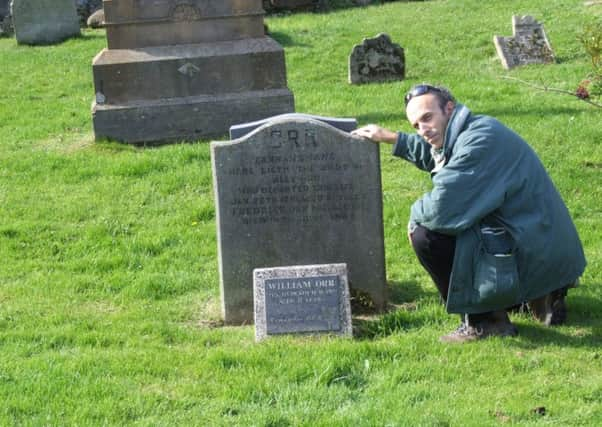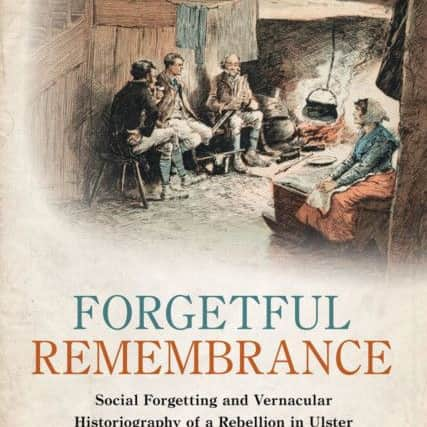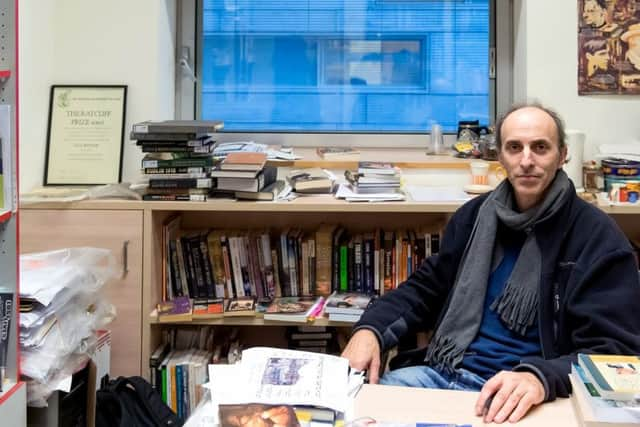Protestant role in 1798 rebellion ‘forgetfully remembered’


A new book, which has taken a decade of painstaking research, uses Ulster’s troubled past to introduce the concept of ‘social forgetting’.
Guy Beiner, a 50-year-old Israeli professor, has made countless trips to Northern Ireland in order to research and analyse “uncomfortable” memories for Protestants and Presbyterians about the Irish Rebellion of 1798.
Advertisement
Hide AdAdvertisement
Hide AdMr Beiner, who teaches modern history at Ben-Gurion University of the Negev in Israel, explained how he came to write about this part of the world: “I’ve always been interested in Irish history and folklore. I did a PhD in Irish History in Dublin.


“I wrote a book some years back on the 1798 Rebellion in the west of Ireland (Remembering the Year of the French: Irish Folk History and Social Memory).
“I became increasingly interested in Ulster and Northern Ireland because it’s much more complicated.
“I looked at the involvement of Protestants, particulary Presbyterians in the rebellion. People often claim the memory of [their participation in the rebellion] has been erased but the more I looked into it I found thousands of sources – from the News Letter alone I used 450 articles.
Advertisement
Hide AdAdvertisement
Hide Ad“When you look a little deeper it has not been forgotten. There has always been this ambivalent, uncomfortable, almost hidden remembrance.


“It puzzled me a lot. As an international researcher coming from a very different country and culture it interested me.”
He continued: “For the first book I had to learn Irish, for this one I had to become familiar with Ulster-Scots.
“I spent a decade visiting Northern Ireland, doing a lot of work in every specialist library, in every archive, not just in Northern Ireland but all over the world where I could find relevant material to understand this dynamic of social forgetting. The hidden history became so much more apparent.”
Advertisement
Hide AdAdvertisement
Hide AdAccording to the book’s blurb, Forgetful Remembrance examines the paradoxes of what actually happens when communities persistently endeavour to forget inconvenient events.
Case studies in the book address the “problematic historical episodes” in the north-eastern counties of Ulster, where Mr Beiner says loyalist and unionist Protestants — and in particular Presbyterians — “repeatedly tried to repress over two centuries discomfiting recollections of participation, alongside Catholics, in a republican rebellion in 1798”.
Mr Beiner said: “I spent a good many years researching it. You won’t find anywhere in the world – or so I’ve been told – a book looking at the history of memory and forgetting over 200 years in such detail.
“I have a long perspective on looking at Northern Ireland, before it was called Northern Ireland.
Advertisement
Hide AdAdvertisement
Hide Ad“It’s a completely different place now, and yet I make a point of visiting each and every site I write about. There is this kind of memory everywhere you go.
“In practice social forgetting is a form of rememberance, you decide to forget something but under the surface a lot is still remembered in different places. It’s about this tension between a declaration to forget and what actually happens on the surface.
“Commemoration and decommemoration is even stronger than that. When I look at cases where people try to smash a monument or stop a parade, deface a memorial – inevitably it brings attention to the memorial.
“When someone tries to stop a form of commemoration it gives incentive to recommemorate even louder.
Advertisement
Hide AdAdvertisement
Hide Ad“I wouldn’t say Northern Ireland is a textbook case but these issues are very apparent.”
One of the case studies in the book looks at a memorial in Ballynahinch to United Irishwoman Betsy Gray.
The memorial was destroyed by a loyalist mob on May 1, 1898 to prevent nationalist visitors from from laying wreaths at it.
Mr Beiner said: “This is a case of competitive memory, memory envy, possessive memory.
Advertisement
Hide AdAdvertisement
Hide Ad“Part of the fact that stopped Protestants from remembering was the fact Catholics remembered it, they reclaimed it, they took over it.
“There is nothing there now because the monument was destroyed.
“When I walked around with a map someone came up to me and asked could he help me. He took me to his house and told me songs that have never been published about Betsy Gray.
“Places changes completely but the memories remain, sort of haunting around. That’s what makes it so fascinating.”
Advertisement
Hide AdAdvertisement
Hide AdOther prominent examples coincided with the violence of the Troubles.
Mr Beiner said: “In January 1969, when the People’s Democracy civil rights march from Belfast to Derry reached the village of Toome, they found that the monument to the local folk rebel hero Roddy McCorley had been destroyed the previous night. Before he was celebrated as a rebel hero I have found references to Roddy McCorley in Presbyterian folklore.”
In another example of decommemoration Mr Beiner said: “In April 1971, the Celtic cross tombstone in Mallusk cemetery of Francis Joseph Bigger was destroyed by explosives. Bigger was a Belfast antiquarian, renown in his day as the foremost authority on the history and folklore of the northern United Irishmen but his grave was ‘decommemorated’ in a deliberate loyalist attack in 1970.”
Mr Beiner also visited the grave of William Orr in Templepatrick.
Advertisement
Hide AdAdvertisement
Hide AdMr Orr was a Presbyterian farmer and republican supporter who was executed in 1797 – the year before the Irish Rebellion – after it was alleged he had sworn into the secret society of United Irishmen.
He was the first Presbyterian Republican to be executed by the British.
Asked if he believed it is necessary to forget the past in order to move on, or whether it is better to remember the past and learn from mistakes, Mr Beiner said: “Lots of people will argue exactly this point. Memory good, memory bad, remembering good, forgetting bad.
“It doesn’t work like that it practice. Memory is not a lightbulb that you switch on and off.
Advertisement
Hide AdAdvertisement
Hide Ad“You can’t just decide to forget something and a government can’t tell you to forgot someone either.
“That’s why the term that I’ve introduced in this book is social forgetting. It’s a much more complicated process.”
He said one of the more recent instances of decommemorating happened in April 2014 with the defacing of a blue plaque in Mallusk graveyard in memory of 1798 rebel James (Jemmy) Hope, a United Irishmen leader who came from a Presbyterian family in Templepatrick.
The department of Irish Studies at Queen’s University will host the launch of Guy Beiner’s book tomorrow (Thursday).
Advertisement
Hide AdAdvertisement
Hide AdIt takes place at 5pm in the Lanyon Building and speakers include Mr Beiner himself as well as Professor Peter Gray.
The following day will see Mr Beiner return for an interdisciplinary postgraduate workshop on memory studies in Ireland at 10am.
He said: “I assume primarily it will be for people interested in history and literature but it could be the whole gamut because I’m going to be talking about forgetting in general.”
Of the target audience for the book he said: “It is not aimed not just for Northern Ireland market, but for people around the world.”
Advertisement
Hide AdAdvertisement
Hide AdMr Beiner said that throughout his book Forgetful Remembrance: Social Forgetting and Vernacular Historiography of a Rebellion in Ulster, comparative references demonstrated the wider relevance of the study of social forgetting in NI to numerous other cases where “troublesome memories have been concealed behind a veil of supposed oblivion”.